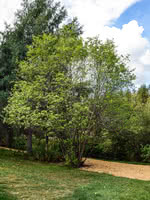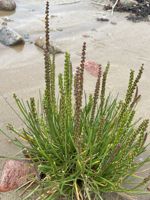Mon-Fri 9am - 5pm Mountain time
Grey Alder vs Seaside Arrowgrass
Alnus incana
Triglochin maritima
NOT AVAILABLE THIS SEASON - MIGHT RETURN
CUSTOM GROW
River Alder is a large shrub or small tree with a multi-stemmed, spreading habit. It is an excellent tree to plant if you want to stabilize the soil near rivers and creeks.
Unlike the other alder varieties, River Alder is attractive enough to be included in riverside plantings by municipal and provincial park organizations.
Note: We use Grey Alder for Alnus incana. This species is also known by many other common names, including River Alder, Speckled Alder, and others. Please confirm the scientific name to ensure you are ordering the correct plant.
Seaside Arrowgrass is a native perennial commonly found in wetlands, salt marshes, and moist meadows. It is especially suitable for difficult growing sites. Its dense root system helps stabilize soil, while also providing food, cover, and habitat for small animals within the wetland community.
Seaside Arrowgrass is suitable for shoreline stabilization, wetland restoration, and naturalization projects.
Grey Alder Quick Facts
Seaside Arrowgrass Quick Facts
Toxicity: can be toxic to humans and livestock

